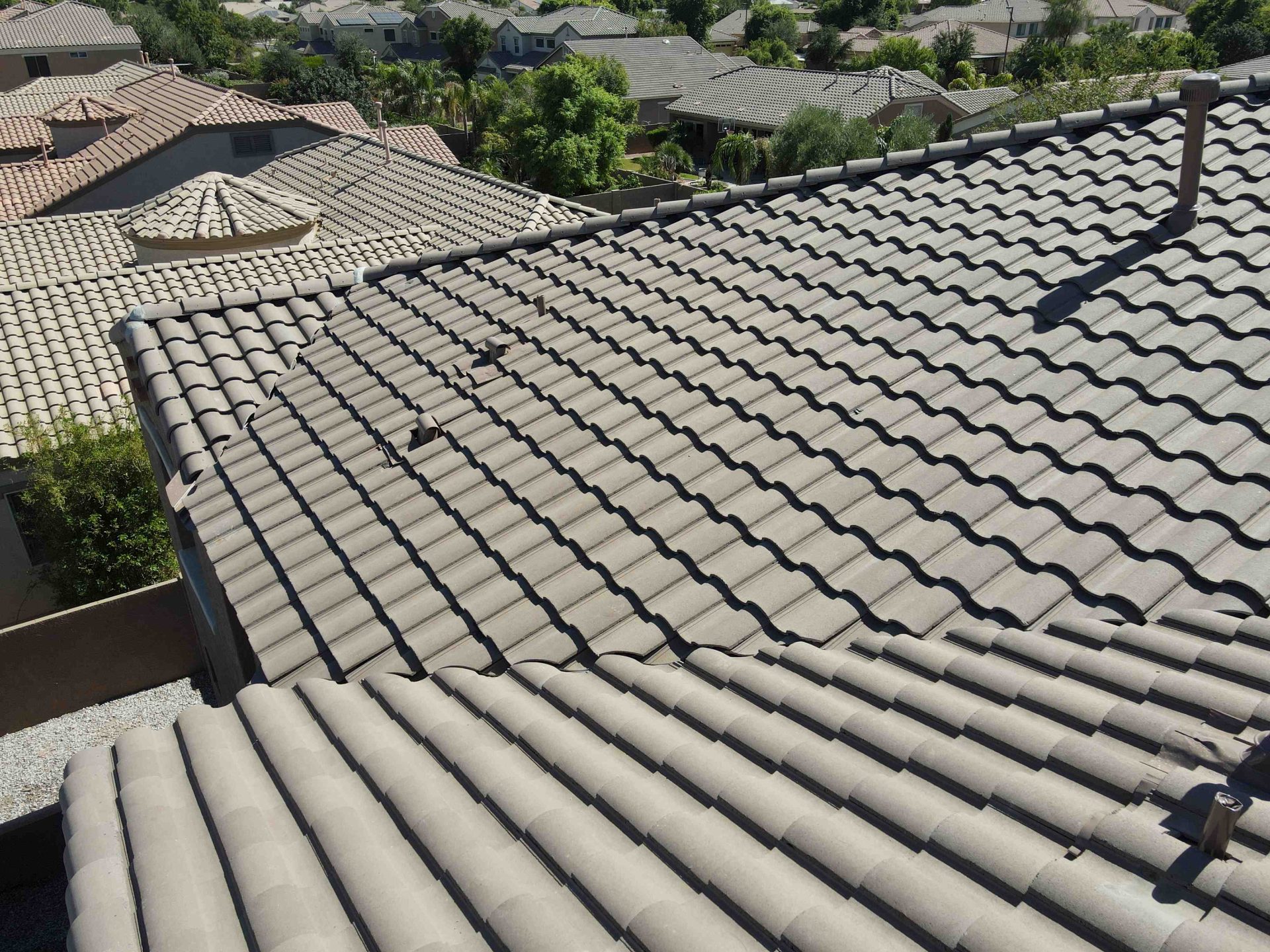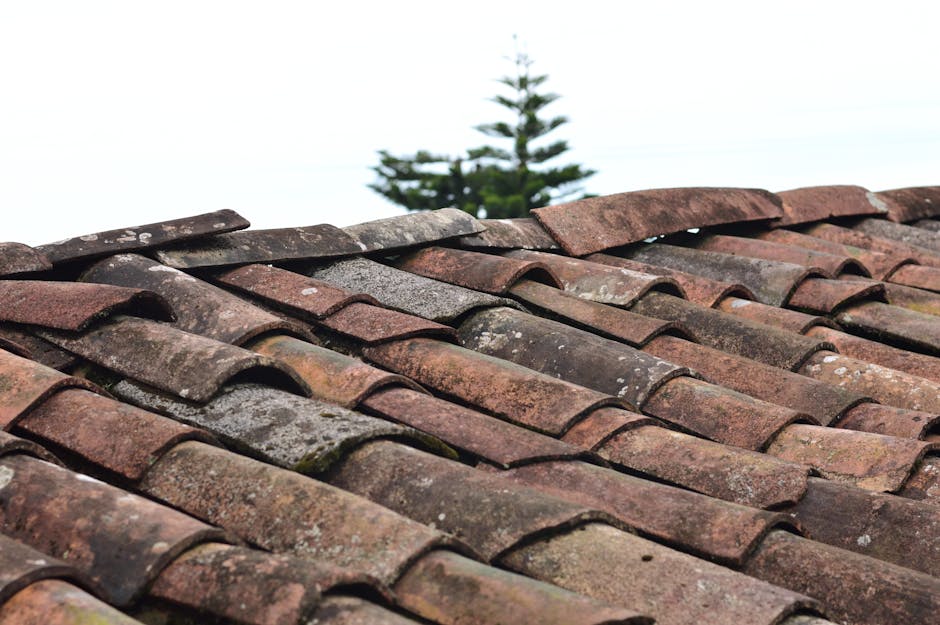How long does a tile roof last? Tile roofs are known for their impressive durability, often outlasting other roofing materials like asphalt shingles by decades. Here’s a quick answer:
- Lifespan: 50 years or more, with proper maintenance
- Advantages: Durable, fire-resistant, aesthetically appealing
- Maintenance: Minimal, but essential to check regularly
Tile roofs—whether made from terracotta, clay, ceramic, concrete, or slate—are celebrated worldwide for their longevity and resilience. Homes across Italy, the Southwest US, and even the Northeast showcase these timeless roofing solutions.
Advantages:
Their unique design aids in natural water shedding and ventilation, which significantly boosts their lifespan. They are also available in various colors and styles, allowing homeowners to choose a look that complements their home.
Maintenance:
Minimal upkeep is required, primarily focusing on gutters and flashings. Regular inspections, usually annually, help identify and address minor issues before they escalate. By performing these tasks, homeowners can extend their roof’s life and maintain its functionality and appeal.
Understanding the Durability of Tile Roofs
Types of Tile Roofs
When it comes to tile roofs, there are three primary types: clay, concrete, and slate. Each has its own unique benefits and lifespan.
Clay Tiles
Clay tiles are made from natural materials and are known for their long lifespan. These tiles can last over 100 years if installed and maintained properly. They are also recyclable, making them a sustainable option. However, clay tiles are not always the best choice for areas with severe weather conditions like hail or heavy rain.
Concrete Tiles
Concrete tiles are crafted from a mixture of cement, sand, and water. They are extremely durable and can withstand harsh weather conditions, including hurricanes and heavy winds. Concrete tiles typically last between 50-60 years. One downside is that they are heavier than other materials, which may require additional roof structure reinforcement.
Slate Tiles
Slate tiles are the premium choice, known for their exceptional longevity. These tiles can last up to 150 years. However, they are also the most expensive option. Slate tiles offer a classic, timeless look and are highly resistant to fire and weather damage.
Factors Influencing Lifespan
Several factors influence how long a tile roof lasts, including climate, installation quality, and maintenance.
The climate significantly affects the lifespan of a tile roof. In regions with extreme temperatures or frequent severe weather, tiles can wear out faster. For example, the harsh sun and high humidity in Florida can cause tiles to expand and contract, leading to cracks. Regular inspections can help identify and address these issues early.
Installation Quality
Proper installation is crucial for maximizing the lifespan of your tile roof. This includes using the correct underlayment, ensuring proper spacing and overlap, and securing each tile correctly. Poor installation can lead to leaks, misalignment, and premature wear. Always hire a reputable roofing contractor to ensure quality installation.
Maintenance
Regular maintenance can greatly extend the life of your tile roof. This includes:
- Regular Inspections: Check for damaged or missing tiles, especially after severe weather.
- Cleaning: Remove debris like leaves and twigs to prevent moisture buildup.
- Immediate Repairs: Address minor cracks or chips promptly to prevent further damage.
Weather
Weather conditions like hail, high winds, and heavy rain can shorten the lifespan of your tile roof. In areas prone to hurricanes, like Florida, regular inspections and prompt repairs are essential to maintain the roof’s integrity.
By understanding these factors and taking proactive measures, you can ensure your tile roof lasts as long as possible.
Maintenance: The Key to Longevity
Tile roofs are known for their durability, but they still require regular upkeep to ensure they stand the test of time. Proper maintenance can extend the lifespan of your tile roof significantly.
When to Opt for Restoration
Age
Tile roofs can last 50 to 100 years, but if your roof is over 20 years old, it might be time to consider restoration. Over time, tiles can become brittle and fragile, leading to cracking and other damage.
Weather Damage
Weather conditions like hurricanes, heavy rain, and high winds can cause tiles to loosen or become displaced. If you notice cracked or missing tiles, it’s crucial to address them promptly to prevent leaks and water damage.
Aesthetic Appeal
Restoration can also improve the look of your roof. Over time, tiles can lose their original color and charm. Restoring your roof can give it a fresh, new appearance and enhance your home’s curb appeal.
Preventive Measures
Experts recommend inspecting your roof at least once a year or after severe weather events. Regular inspections help identify potential issues before they escalate into costly repairs.
Cleaning
Keeping your tile roof clean is not just about aesthetics; it also prevents the buildup of debris that can lead to moisture retention and eventual damage. Use a soft broom or a low-pressure water hose to remove leaves, twigs, and other debris. Avoid high-pressure washers, as they can damage the tiles.
Immediate Repairs
If you notice small cracks or chips in your tiles, immediate action can prevent further deterioration. Small cracks can often be sealed with roofing cement, while larger ones might require tile replacement.
Gutter Cleaning
Clogged gutters can lead to standing water, which may cause leaks or structural damage. Regularly check and clean your gutters, especially after severe weather.
Debris Removal
Debris like leaves, branches, and dirt can accumulate on your roof and cause damage over time. Schedule regular cleanings to remove any buildup. This simple task can prevent more significant issues down the line.
Algae Treatment
Algae and moss can weaken your tiles over time. Regular cleaning and treatment can prevent these organisms from taking hold. Consider using a roof-safe algae treatment to keep your tiles in top condition.
By incorporating these preventive measures and maintenance tips, you can enhance the longevity of your tile roof and enjoy its benefits for decades. Regular care not only saves you money in the long run but also maintains the aesthetic appeal and functionality of your roof.
Comparing Tile Roofs to Other Roofing Materials
When it comes to choosing a roofing material, tile roofs often stand out for their durability and aesthetic appeal. But how do they stack up against other popular options like shingle roofs? Let’s dive in.
Tile vs. Shingle Roofs
Cost
Tile roofs have a higher initial investment compared to shingle roofs. While shingle roofs are relatively affordable, costing between $5,000 to $10,000 for an average home, tile roofs can range from $10,000 to $25,000 or more. However, the long-term savings on maintenance and replacement can make tiles a more cost-effective choice over time.
Installation Process
Installing tile roofs is more labor-intensive and requires specialized skills. The tiles are heavy and need precise placement to ensure durability and weather resistance. Shingle roofs, on the other hand, are easier and quicker to install, which can reduce labor costs.
Value Retention
Tile roofs add significant value to your home due to their longevity and aesthetic appeal. They can last 50 years or more, whereas shingle roofs typically last 20 to 30 years. This longevity can be a selling point if you decide to sell your home.
Lifespan
As mentioned, tile roofs can last over 50 years with proper maintenance. Some tile roofs, like those made from clay or slate, can even last a century. Shingle roofs, however, generally need replacement after 20 to 30 years, especially in harsh climates like Florida.
Aesthetic
Tile roofs offer a unique, timeless look that can enhance the architectural style of your home. They come in various colors, shapes, and materials, allowing for customization. Shingle roofs, while versatile, often lack the distinct visual appeal of tile roofs.
Initial Investment
The initial cost of a tile roof is higher, but this investment pays off in the long run. Shingle roofs may be cheaper upfront but can incur higher costs over time due to more frequent repairs and replacements.
Environmental Impact
Sustainability
Many tile roofing materials, like clay and concrete, are made from natural, recyclable materials. This makes them a more sustainable choice compared to asphalt shingles, which are petroleum-based.
Energy Efficiency
Tile roofs excel in energy efficiency. Their natural thermal properties help regulate indoor temperatures, reducing the need for heating and cooling. This can lead to lower energy bills and a smaller carbon footprint.
Recyclability
Tile roofs are highly recyclable. When their lifespan ends, the materials can be repurposed or recycled, reducing environmental waste. Shingle roofs, however, often end up in landfills, contributing to environmental pollution.
By comparing these factors, it’s clear that while tile roofs require a higher initial investment, their long-term benefits in terms of durability, aesthetic appeal, and environmental impact make them a superior choice for many homeowners.
Conclusion: Maximizing Your Roof’s Potential
To get the most out of your tile roof, regular maintenance and professional assistance are key. Here’s how you can ensure your roof lasts for decades:
- Regular Inspections: Have your tile roof inspected at least once a year. This helps catch small issues before they become big problems.
- Timely Restoration: If your roof is over 20 years old or shows signs of wear, consider a tile roof restoration. This can extend its lifespan and improve its look.
- Professional Help: Always rely on experienced professionals for repairs and maintenance. They have the right tools and knowledge to handle the job safely and effectively.
Five Guys Roofing: Your Partner in Roof Longevity
At Five Guys Roofing, we are a family-owned business with over 30 years of experience in the roofing industry. We understand the unique challenges of maintaining tile roofs in Arizona’s climate. Our commitment to quality and customer satisfaction means you can trust us to keep your roof in top condition.
We offer a 100% satisfaction guarantee on all our services. Whether you need a routine inspection, a minor repair, or a full roof restoration, our team is here to help.
Learn more about our roofing services
FAQ Section
- How often should tile roofs be inspected?
Tile roofs should be inspected at least once a year. If your area experiences severe weather, more frequent inspections are recommended. - Can tile roofs withstand severe weather conditions?
Yes, tile roofs are highly durable and can withstand severe weather, including high winds, heavy rain, and even fire. In Florida, for example, tile roofs have been proven to withstand sustained winds of 150 MPH. - What is the most durable type of tile roof?
Slate tiles are the most durable, lasting up to 150 years. Clay tiles can last over 100 years, while concrete tiles typically last over 50 years with proper maintenance. - How does the weight of tile roofs affect the structure of a home?
Tile roofs are heavier than other roofing materials. It’s essential to ensure your home’s structure can support the weight. Professional roofers can assess and reinforce your structure if necessary. - When is the best time to consider tile roof restoration?
Consider restoration if your tile roof is over 20 years old, shows signs of weather damage, or if you notice aesthetic issues like cracked or missing tiles. Timely restoration can extend the life of your roof and improve its appearance.
For expert advice and assistance, contact Five Guys Roofing at 480-892-5311. We are here to help you make the best decision for your roofing needs.



